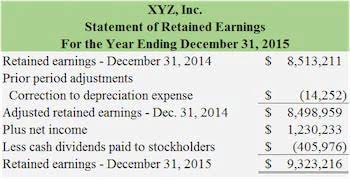
A company’s number of outstanding shares is not static and may fluctuate wildly over time. Fully number of shares outstanding formula diluted shares outstanding are the total number of shares a company would theoretically have, including basic shares outstanding, if all dilutive securities were exercised and converted into shares. Dilutive securities include options, warrants, convertible debt, and anything else that can be converted into shares. If you want to understand how to make money trading stocks, it’s critical to understand the different kinds of shares that companies make available. Calculating the number of outstanding shares a company has can help you to understand what proportion of a company’s stock is held by its shareholders.
How To Calculate

Investors often track changes in outstanding shares as part of their broader analysis when making investment decisions. Understanding the dynamics of outstanding shares is integral to comprehending a company’s financial https://www.facebook.com/BooksTimeInc/ health and market position. The shares available to investors on the open market are commonly called the float.
Do you own a business?
There is no specific formula, the calculation needs to be done by hand or with a computer program. For the denominator to be consistent with the numerator, it should reflect the earning power resulting from the issuances of new shares or the retirement of old shares. «Shares outstanding» also is a line in the data that is displayed with any stock quote. Volatility profiles based on trailing-three-year calculations of the standard deviation of service investment returns. We Fools may not all hold the same opinions, but we all believe that considering a diverse range of insights makes us better investors.
Outstanding Shares and Share Repurchase Programs

Outstanding shares can also be used to calculate some key financial metrics, including a company’s market cap and its earnings per share. They are separate from treasury shares, which are held by the company itself. Outstanding shares refer to the total number of shares of a company’s stock that are currently owned by shareholders. This metric is crucial for investors as it impacts the calculation of earnings per share (EPS) and the company’s market capitalization.
What Is the Difference Between Shares Outstanding and Floating Stock?
When you look a little closer at the quotes for a company’s stock, there may be some obscure terms you’ve never encountered. For instance, restricted shares refer to a company’s issued stock that cannot be bought or sold without special permission by the SEC. Often, https://www.bookstime.com/ this type of stock is given to insiders as part of their salaries or as additional benefits.
- A financial professional will offer guidance based on the information provided and offer a no-obligation call to better understand your situation.
- Consequently, the generally accepted accounting principles (GAAP) require the use of an average number of shares outstanding as the starting point for all denominators.
- Examples of dilutive contracts include stock convertible securities, employee stock options and restricted stock units (RSUs).
- For information pertaining to the registration status of 11 Financial, please contact the state securities regulators for those states in which 11 Financial maintains a registration filing.
- Let us understand the formula that shall act as the basis of our understanding and the formation of the outstanding shares equation through the discussion below.
- These are called “treasury shares” and are not included in the balance.
To calculate the weighted average of outstanding shares, multiply the number of outstanding shares per period by the proportion of the total time covered by each period. Then, add those terms together to get the weighted average number of outstanding shares. Finally, outstanding shares are different than authorized shares, or the number of shares that a corporation is legally allowed to issue. Outstanding stocks are the shares that are actually already out on the market. After initial public offerings or SPAC (special purpose acquisition company) mergers, pre-existing owners usually have “lock-up” requirements that prohibit selling for a period of time (usually at least 90 days).
- Understanding the dynamics of outstanding shares is integral to comprehending a company’s financial health and market position.
- Diluted shares are most commonly used to calculate a company’s earnings per share (EPS).
- Investors use this data to calculate financial ratios, assess ownership structures, and make informed investment decisions.
- Outstanding shares represent a company’s shares that are held by investors, whether they’re individual, institutional, or insiders.
- Calculating the weighted average number of shares resolves the problem by taking into account the length of time that the changed number was in effect.
How confident are you in your long term financial plan?
It is the number of shares that have been authorized and issued to investors, which can be both institutions and individuals. Earnings per share is a measure of a company’s valuation, calculated by dividing its profit by the number of shares outstanding. A company’s market capitalization is the current market value of all of its outstanding shares. Outstanding shares impact a company’s market capitalization, which is calculated by multiplying the stock price by the number of outstanding shares. Changes in the number of outstanding shares can affect the stock price by altering supply and demand dynamics.

Ask a Financial Professional Any Question
11 Financial is a registered investment adviser located in Lufkin, Texas. 11 Financial may only transact business in those states in which it is registered, or qualifies for an exemption or exclusion from registration requirements. 11 Financial’s website is limited to the dissemination of general information pertaining to its advisory services, together with access to additional investment-related information, publications, and links. In this case, the same result could have been achieved by multiplying the 111,000 shares from Example 1 by a factor of 2. This shortcut is used to adjust the average outstanding shares for earlier years covered by comparative statements.

Are Any Company Shares Excluded from the Number of Outstanding Shares?
- Now that you’re equipped with this foundation of knowledge, all you need to do to figure it out is to go look it up on any company’s balance sheet in their 10-Q or 10-K filing.
- The inputs you’ll need for this calculation are located on the balance sheet.
- Among investors, it is most relevant to those who compile a position in a stock over a long period of time, buying on the dips and holding the shares.
- Outstanding shares can also be used to calculate some key financial metrics, including a company’s market cap and its earnings per share.
- As noted above, outstanding shares are used to determine very important financial metrics for public companies.
Investors may choose to use weighted averages if they have compiled a position in a particular stock over a period. Given continuously changing stock prices, the investor will calculate a weighted average of the share price paid for the shares. Shares outstanding and weighted average shares are both numbers that can help an investor understand how well a company performs over time. Once you’ve located the company’s balance sheet, find the line item for preferred stock.

